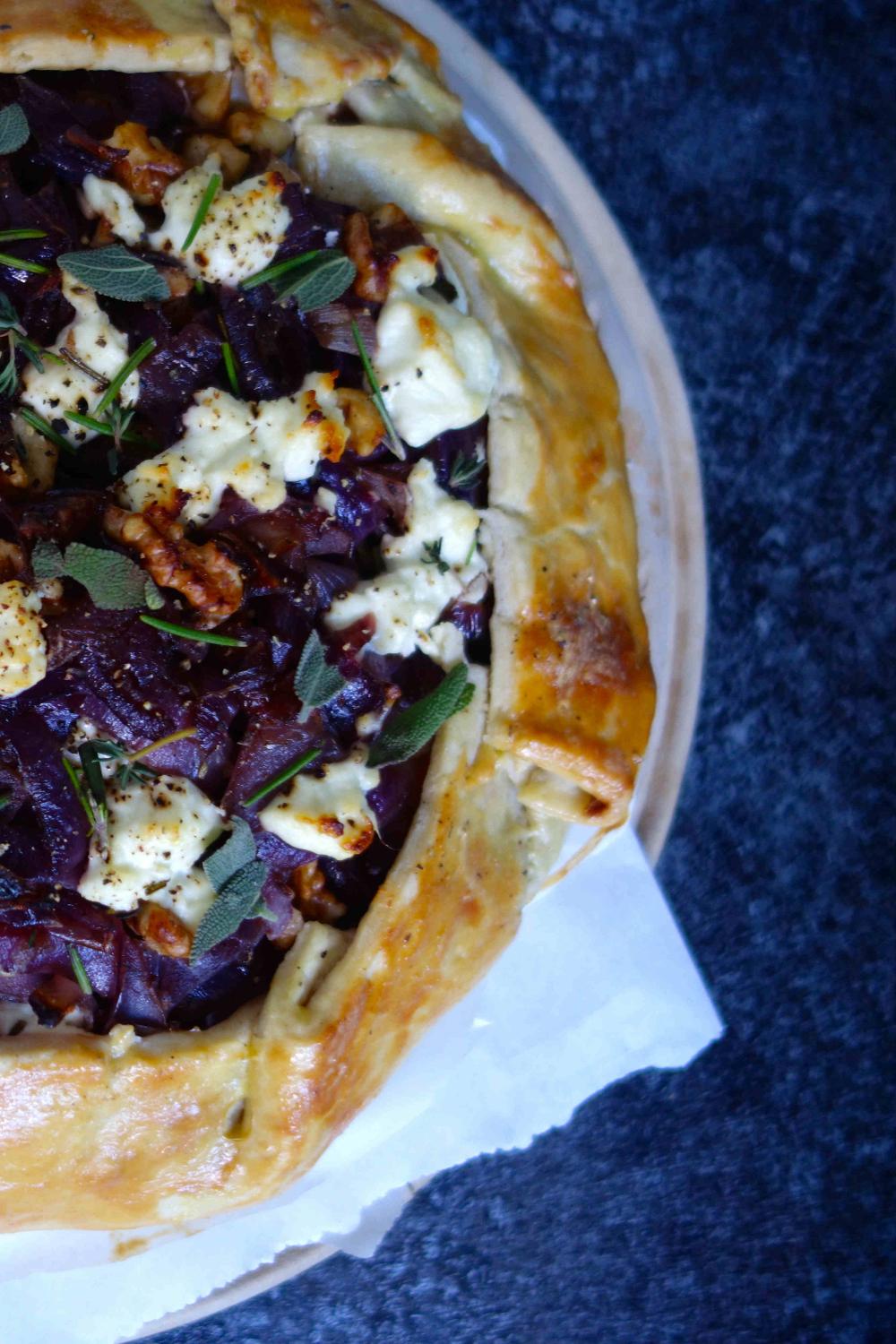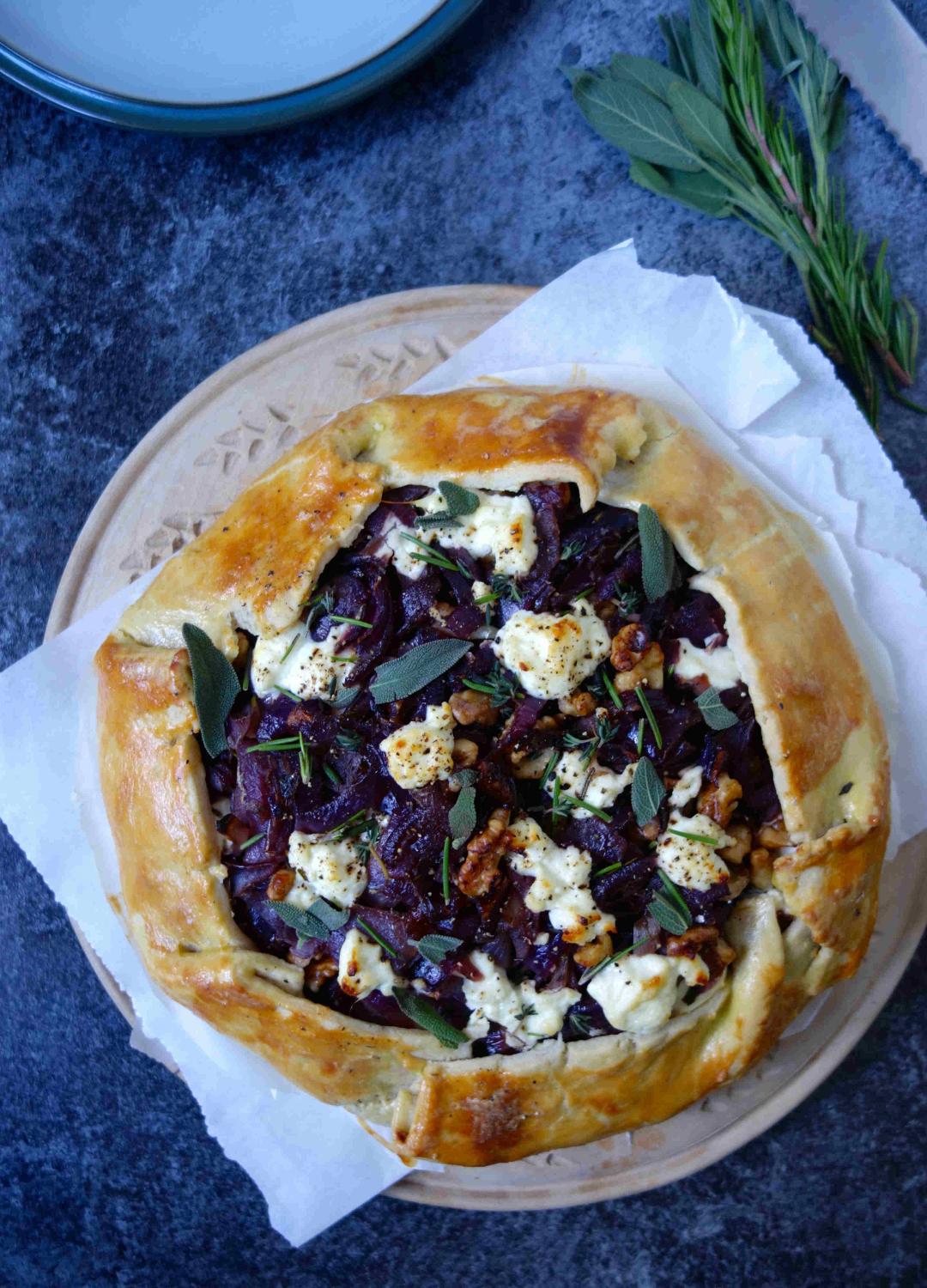PASTRY
Start by making your pastry, which you can do either by hand or using a food processor. First cut your butter into small cubes of roughly 1cm using two knives to avoid touching it with your hands, and place it in a large mixing bowl.
Sift your flour and salt from a height into the bowl, to get the air into the ingredients. Gently rub the butter into the flours using your fingertips. A light touch here is important; lift up the flour as you do this and let it fall back into the bowl to create a lighter texture for the mix. You should end up with a breadcrumb-type consistency – don’t overwork it. If using a food processor, pulse the flour and butter together until you reach this consistency.
Add 2 tablespoons of cold water by sprinkling it evenly over the mixture. Use a blunt kitchen knife or palette knife to incorporate it as quickly as possible and bring the dough together. If you need more water add it gradually and sparingly – you only need enough to bind the dough. If your ingredients look dry then add some more, but stop before it becomes wet and tacky; you want to end up with a soft dough. If using a food processor, it can be a little harder to tell as you can’t touch the dough, so stop the motor from time to time to check the consistency. If you push your ball of dough together and it cracks, the gluten needs a little more working.
Shape your dough into a disc and wrap it in cling film. Rest it in the fridge for at least 30 minutes.
FILLING
While the dough is resting in the fridge, assemble your filling.
Melt the butter in a large non-stick saucepan. Add the onions and chopped herbs, and after five minutes or so stir through the balsamic vinegar and garlic. Fry over a low heat for 30 minutes, stirring from time to time. Stir through the walnuts, season with salt and pepper, and set it aside to cool.
Preheat your oven to 180°C and line a baking tray with baking parchment.
Lightly flour your work surface. Roll out the pastry to 2-3mm thick in a large circle, to allow for a 28cm base plus 6cm border (approximate). The border will form the edges of the galette. Transfer your pastry on to the baking tray. Pile your onion filling into the centre, and dot the goats’ cheese evenly throughout. Compact the filling down with your hands into a firm circle. Fold your 6cm border up over the edges to encase the filling, creating an open-top pie with a crust. If you want to neaten it up, you can trim the edges, or alternatively just leave them rough for a more rustic look. Brush the pastry crust with the beaten egg.
Bake for 25-30 minutes on a low rack in the oven, to allow the pastry to cook through without catching.
Remove from the oven and leave to cool on the tray for 5-10 minutes. Serve warm.




